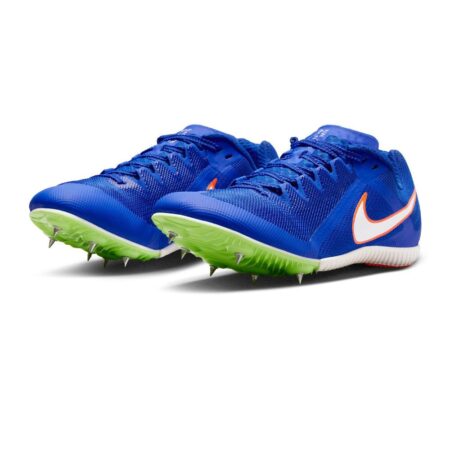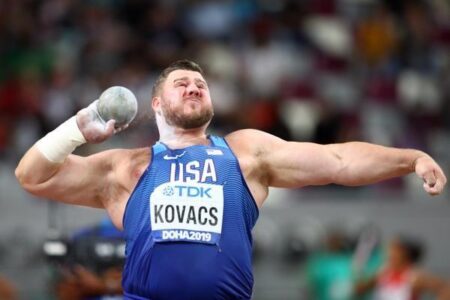In recent years, the ultrarunning community has witnessed a remarkable surge in representation from athletes on the autism spectrum. This growing presence is not only challenging stereotypes about autism but also highlighting unique strengths and perspectives that autistic ultrarunners bring to the sport. From grueling mountain trails to relentless desert courses, these runners are pushing the limits of endurance and reshaping the narrative around neurodiversity in athletics. This article explores the rise of autistic ultrarunners, their motivations, and the impact they are making within the world of ultrarunning.
The Growing Presence of Autistic Athletes in Ultrarunning Communities
In recent years, ultrarunning communities have witnessed a noticeable increase in the participation and visibility of autistic athletes, reshaping perceptions around neurodiversity in endurance sports. These runners often bring unique strengths to the trail-such as an intense focus, perseverance during long solo hours, and heightened sensory awareness-that align well with the demands of ultrarunning. Their presence challenges outdated stereotypes and highlights the diverse capabilities within the sport, inspiring organizers and fellow athletes alike to foster more inclusive environments.
Community members and experts highlight several factors contributing to this growing engagement:
- Supportive peer networks that offer tailored encouragement and mentorship
- Adaptive training methods that accommodate sensory sensitivities and communication preferences
- Increased media attention showcasing success stories that empower autistic athletes
| Year | Estimated Autistic Ultrarunners | Key Events Featuring Autistic Athletes |
|---|---|---|
| 2018 | ~10 | Vertical Kilometer Championships |
| 2021 | ~25 | Ultra-Trail du Mont-Blanc |
| 2023 | ~40 | Western States 100 |
Unique Strengths and Challenges Faced by Autistic Ultrarunners
Autistic ultrarunners bring a distinct set of traits to the endurance running community, often turning perceived challenges into powerful assets. Their ability to hyperfocus allows for extraordinary mental endurance, helping them push through the grueling, often monotonous miles that define ultramarathons. Many find comfort and strength in routine and predictability, which can translate into structured training schedules and race-day rituals that optimize performance. Additionally, an intense passion for details and patterns often enhances their pacing strategies, nutrition plans, and gear choices, contributing to overall race success.
However, the journey is not without obstacles. Sensory sensitivities can pose significant challenges during races, where unpredictable environments and crowds are common. Emotional regulation and social communication may also become hurdles amidst the communal aspects of ultrarunning events, such as checkpoints or aid stations. Below is an outline of some unique strengths and challenges experienced by autistic ultrarunners:
- Strengths: Exceptional focus, strong adherence to routines, deep intrinsic motivation, analytical race planning
- Challenges: Sensory overload, social interaction difficulties, adapting to unexpected race conditions, managing fatigue-related emotional stress
| Aspect | Example | Impact on Performance |
|---|---|---|
| Hyperfocus | Maintaining consistent pace over long distances | Enhances endurance and mental stamina |
| Sensory Sensitivity | Discomfort with loud crowds or unexpected weather changes | May require tailored gear and race strategies |
| Routine-Oriented | Strict training schedules and pre-race rituals | Boosts confidence and reduces race-day anxiety |
| Social Interaction | Challenges at aid stations or group starts | Can lead to increased stress but fosters resilience |
Expert Advice for Supporting and Encouraging Neurodiverse Ultramarathoners
Understanding the unique challenges and strengths of neurodiverse ultrarunners is vital for fostering an inclusive running community. Experts emphasize the importance of tailored support strategies that recognize sensory sensitivities, communication preferences, and varying cognitive processing styles. Simple adjustments, such as offering quiet zones at race events or providing clear, detailed race instructions, can significantly enhance comfort and performance. Equally crucial is the encouragement of self-paced training schedules and allowing space for individualized routines, helping runners harness their exceptional focus and perseverance.
Coaches and race organizers are encouraged to cultivate environments that celebrate diversity and adaptability. Key recommendations include:
- Implementing flexible communication methods, including visual aids and written materials
- Training staff to recognize and respect neurodiverse behaviors without judgment
- Creating peer mentorship programs connecting experienced neurodiverse ultrarunners with newcomers
- Promoting mental health resources tailored to the unique needs of autistic athletes
| Support Element | Benefit |
|---|---|
| Quiet Cooling Areas | Reduces sensory overload post-race |
| Visual Scheduling Tools | Enhances clarity and reduces anxiety |
| Flexible Start Times | Accommodates individual peak performance rhythms |
| Staff Sensitivity Training | Fosters respectful and supportive interactions |
The Conclusion
As the ultrarunning community continues to evolve, the increasing presence of autistic athletes sheds new light on the intersection of neurodiversity and endurance sports. Their stories not only challenge prevailing stereotypes but also inspire broader conversations about inclusion and mental resilience in athletics. Moving forward, organizations and event organizers have an opportunity to foster environments that celebrate diverse cognitive profiles, ensuring the ultrarunning world remains as expansive and varied as the trails themselves. The rise of autistic ultrarunners marks not just a trend, but a meaningful shift toward greater representation and understanding within the sport.





